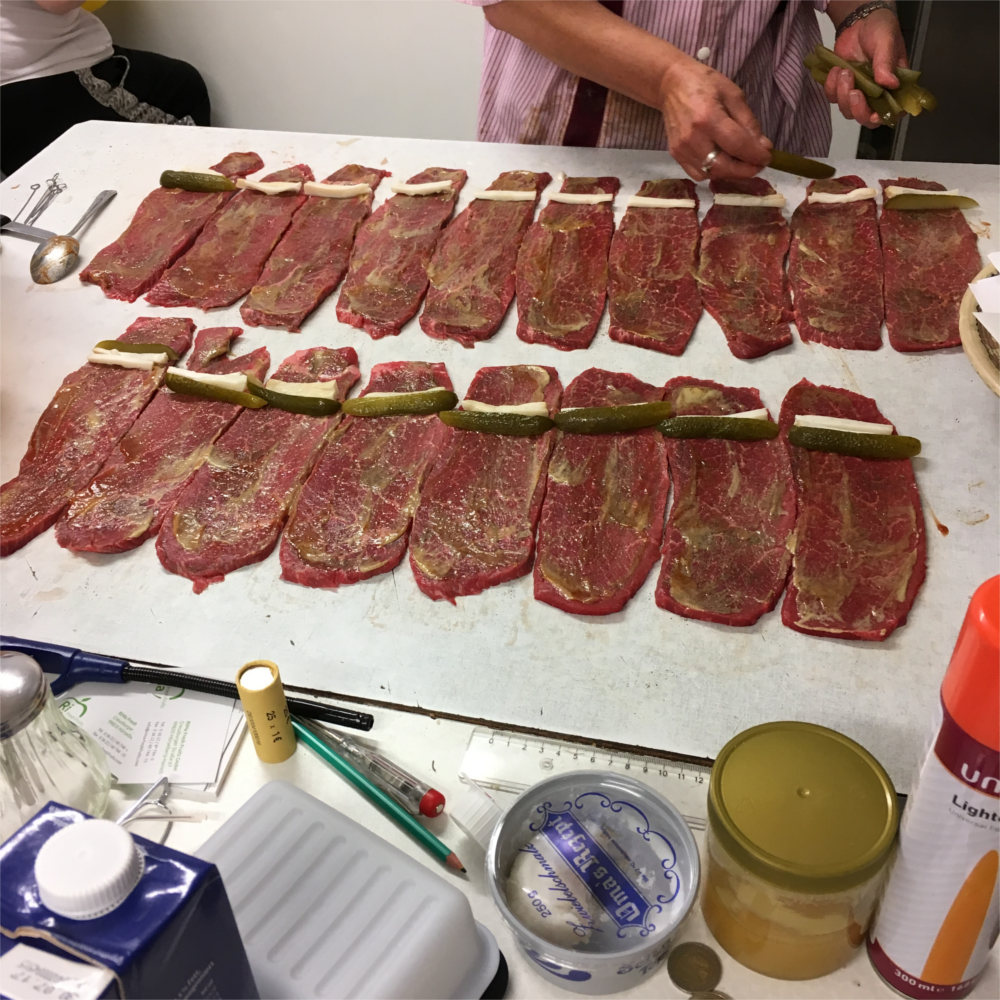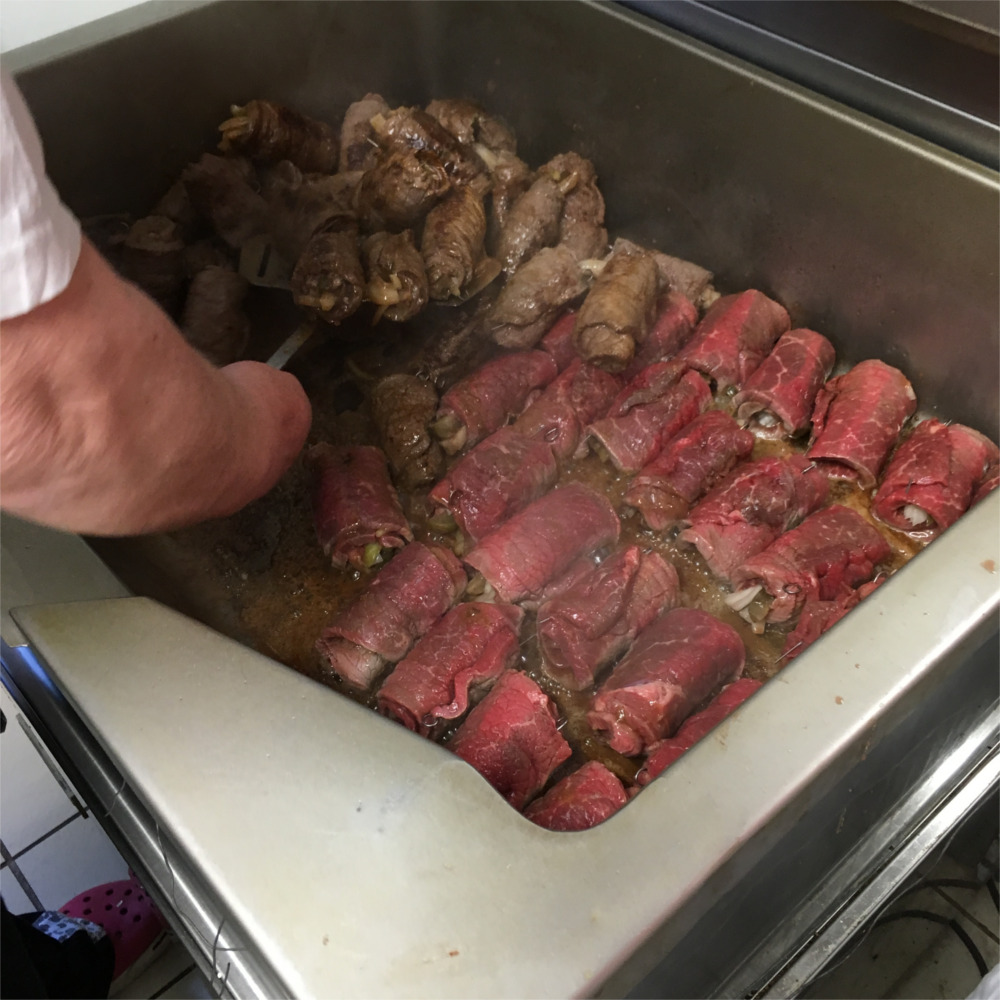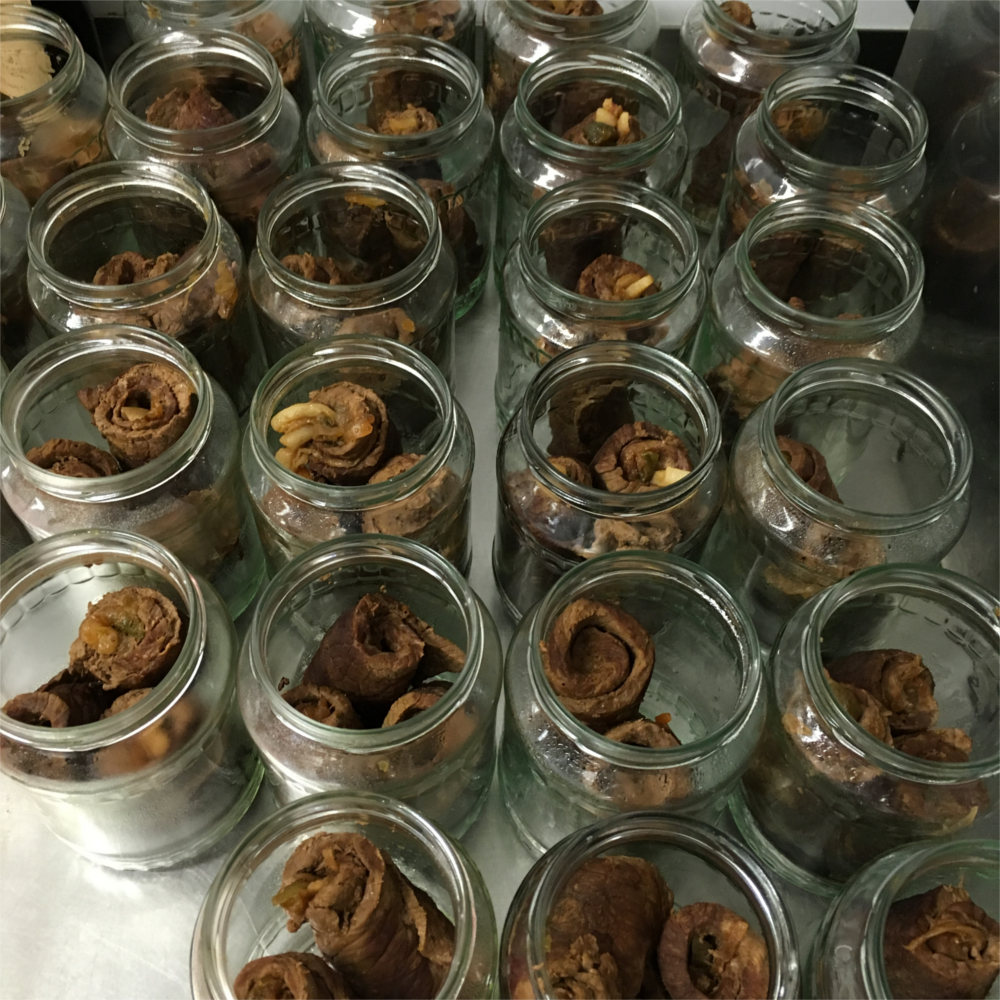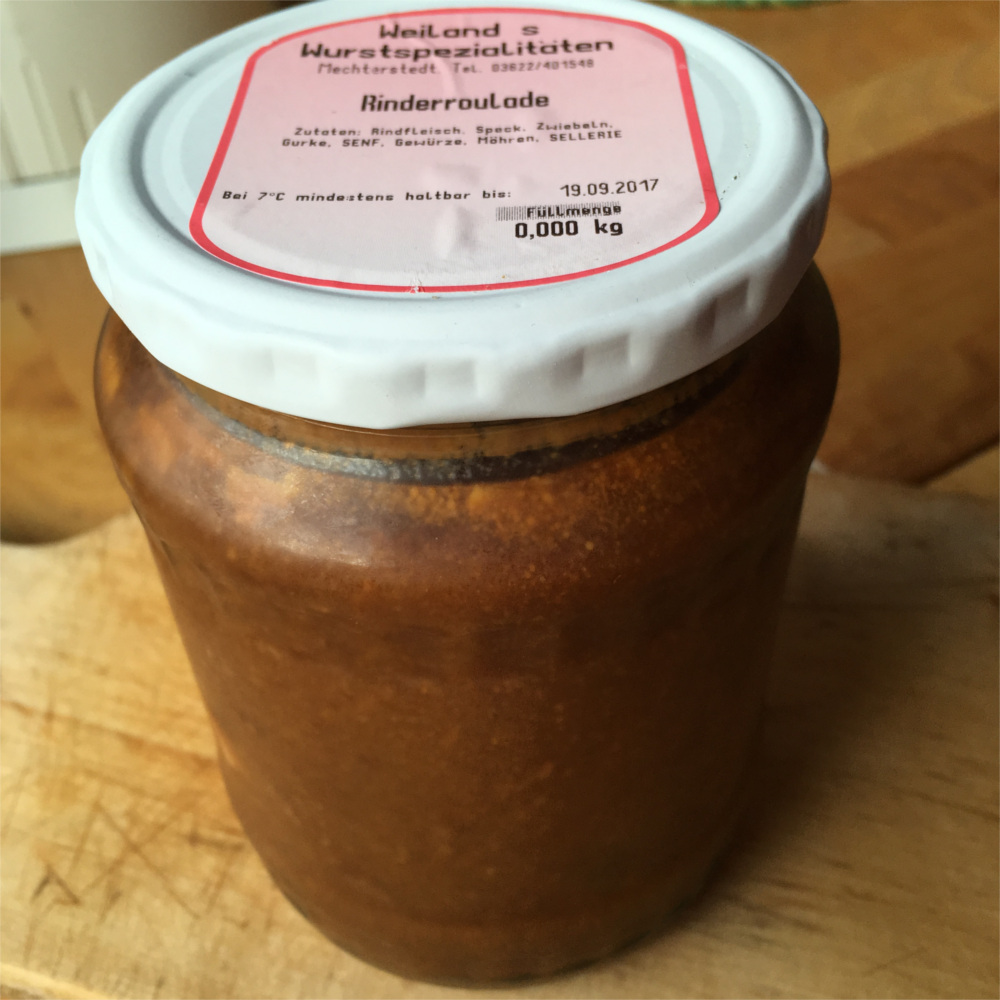Rinderrouladen – The Beef Roll-up
When not producing a smorgasbord of sausage, the butcher also spends time putting together some outdatedly-named “lazy wife meals”. So far, these have consisted of goulash, chicken noodle soup (excluding the noodles), meatballs in white sauce (i.e., Königsberger Klopse), and Rinderrouladen.
The idea is that these dishes are made in large quantities, canned, and then sold individually; the meals need only be heated, accompanied by a starchy-side-dish (noodles or potatoes), and served. I have to be honest that I never considered making a large batch of chicken noodle soup and canning it for future use. Brilliant.
Many of these heat-and-serve meals are time-intensive, so I can see the wisdom in making them in large batches. This is the process taken to create the Rinderrouladen.
Rinderrouladen
Start with thinly-sliced beef, often rump, that are heavily salt-and-peppered. Add a bit of mustard and ketchup.
At one end, add some onion, a pickle, and some pig fat (or fatty bacon).
Roll up and secure with metal stakes or baking twine. Sear the meat on all sides before baking for an hour, ensuring they are thoroughly cooked.
The Sauce
The sauce relies heavily on the stock and juices from cooking the meat – exactly the same way many of the other heat-and-serve sauces were made. Start with a butter-flour mixture and some chopped carrots and celery – then adding the stock, Worcestershire sauce, thyme, allspice, and bay leaf. As always, add salt and pepper to your heart’s desire. Keep water on hand if the sauce becomes too thick.
Canning
Using some large jars, we were able to fit approximately two beef roll-ups per jar. We then filled with the sauce, leaving about one inch head space. These jars were closed and boiled for an hour, then let to cool in the water.
Storage
Store the jars in a cool place, below 45°F – a cool basement would be perfect. Simply open, reheat the contents, boil some potatoes (or craft some Klößer, if you are feeling ambitious), and enjoy!







